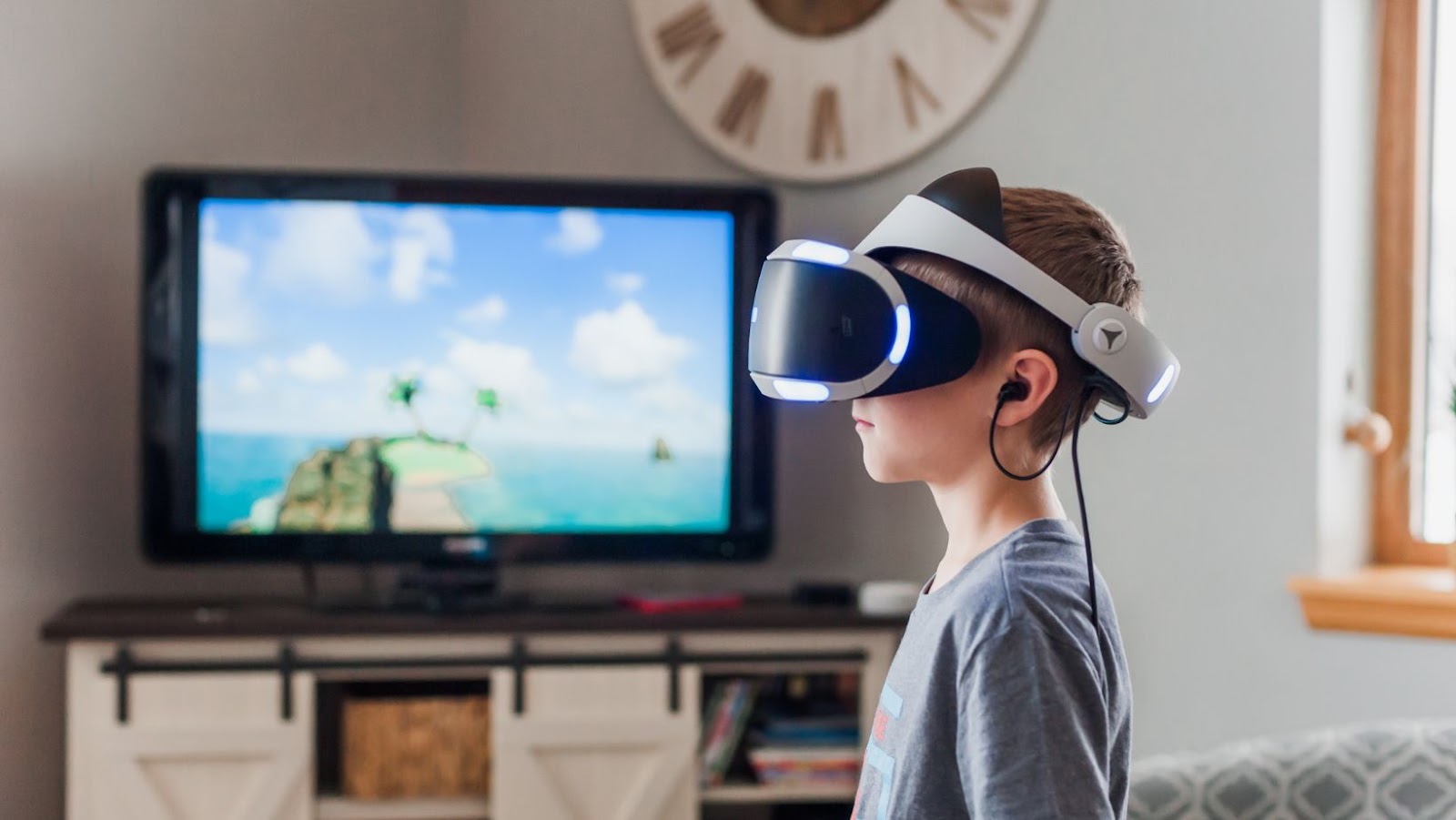 Virtual Reality Headset for Kids
Virtual Reality Headset for Kids
Virtual reality headsets for kids offer a unique blend of fun and learning, enhancing traditional educational methods. These devices provide immersive experiences where kids can explore historical events, scientific models, and distant landscapes. Popular models include Oculus Quest 2, Merge VR Goggles, and Pansonite VR Headset.
VR headsets expose kids to interactive learning environments, enabling them to engage with complex subjects like biology, physics, and history. For example, they can dissect virtual frogs or visit ancient civilizations. This hands-on approach aids memory retention and comprehension.
Manufacturers design kid-friendly VR headsets with safety as a priority. Headsets often feature adjustable straps, cushioned eye pieces, and limited screen time settings. Parental controls also allow guardians to monitor content and usage, ensuring a safe experience.
Many VR headsets for kids are cost-effective. Brands like Google Cardboard and Oculus offer budget-friendly options without compromising on quality. Some high-end models provide additional educational software and robust build quality, offering long-term value.
Beyond education, VR headsets offer vast entertainment possibilities. Kids can immerse themselves in virtual games, tours, and creative activities. Titles like “Minecraft VR” and “National Geographic Explore VR” provide both engagement and learning opportunities.
Kid-friendly VR headsets are user-friendly and easy to set up. Many of them come with simple instructions, intuitive interfaces, and require minimal technical knowledge. This accessibility ensures that children can enjoy VR experiences without frustration.
VR headsets for kids embody a fusion of educational and entertaining experiences. They continue to evolve, offering improved features and greater accessibility, making them an integral part of modern learning tools.
 Key Features To Consider
Key Features To Consider
Assessing key features is crucial when selecting a virtual reality headset for kids. Several factors ensure children have a safe and enjoyable experience.
Check the age recommendations provided by the manufacturer. Some headsets are designed for older kids, while others are safe and suitable for younger children. For example, devices like the Oculus Quest 2 target users aged 13 and above, whereas the Merge VR Goggles cater to ages 10 and up.
Ensure the headset offers adjustable straps and cushioned eye pieces to provide a comfortable fit. Lightweight models reduce strain during prolonged use. Headsets like the Pansonite VR Headset include adjustable straps and breathable foam padding that ensure comfort.
Opt for headsets that offer child-friendly content and robust parental controls. Devices such as the Oculus Quest 2 feature comprehensive parental control settings that allow adults to monitor usage and restrict access to unsuitable content.
Choose headsets made from durable materials that withstand frequent use. Safety features like cushioned edges and secure padding are essential. Examples include the Merge VR Goggles, designed with soft, flexible material that ensures both durability and user safety.
 Top Virtual Reality Headsets For Kids
Top Virtual Reality Headsets For Kids
Numerous VR headsets cater specifically to children, prioritizing safety, affordability, and educational value. Here are some top picks that stand out in the market.
The Oculus Quest 2 offers a blend of power and user-friendliness, making it suitable for older kids. It features:
- Advanced Processing: Qualcomm Snapdragon XR2 Platform for responsive performance.
- Content Library: Extensive range of educational apps and games.
- Safety Features: Comfortable padding and adjustable head straps ensure a secure fit.
- Parental Controls: Content management options to monitor use.
Ideal for younger users, the Merge VR Headset is designed for both safety and durability. Highlights include:
- Durable Construction: Made from soft, flexible foam to withstand rough handling.
- Compatibility: Works with most iOS and Android smartphones.
- Educational Content: Access to Merge Miniverse, a library of kid-friendly experiences.
- Ease of Use: Simple setup and intuitive controls.
The Oculus Go provides an immersive experience without the need for a connected PC or phone. Essential features are:
- Standalone Operation: Built-in hardware for untethered use.
- Visual Quality: High-resolution display for clear visuals.
- User-Friendly Design: Lightweight and comfortable, with adjustable straps.
- Content Variety: Includes educational, entertainment, and creative apps.
Google Cardboard offers an economical entry point into VR for kids. Key aspects include:
- Affordability: Budget-friendly, making VR accessible to many families.
- DIY Assembly: Easy-to-assemble kit that encourages hands-on learning.
- Compatibility: Works with numerous smartphones.
- Educational Apps: Access to a wide array of VR experiences on Google Play and the App Store.
The Pansonite VR Headset is designed to offer a comfortable and immersive experience. Key features include:
- Comfortable Design: Adjustable head straps and cushioned eye pieces.
- Integrated Audio: Built-in headphones enhance the immersive experience.
- Wide Compatibility: Supports a range of smartphones.
- Diverse Content: Suitable for educational games and apps that captivate young minds.
These headsets provide safe, engaging, and educational VR experiences, making them excellent choices for kids.